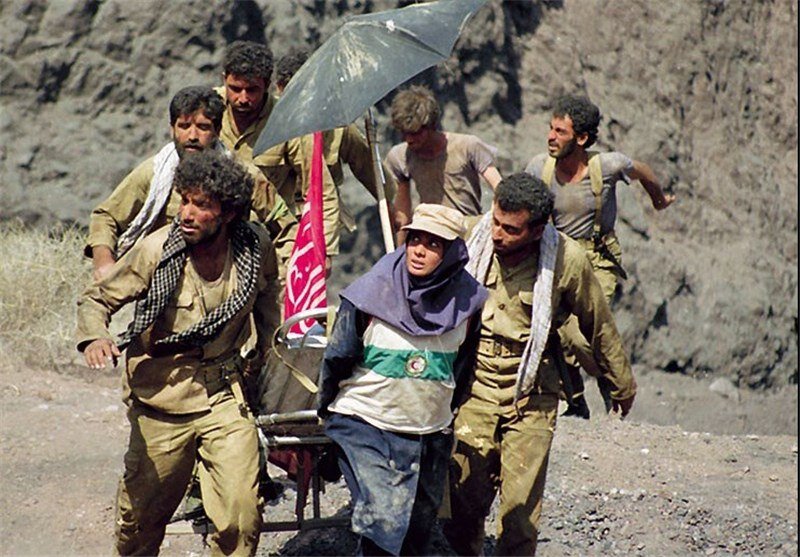A revolution that paved women's way to cinema
Women from the Leader's point of view - Part 19

TEHRAN – Iranian women have played an important role in gaining international recognition for Iranian art and in particular Iranian cinema.
After the victory of the Islamic Revolution of Iran and the fall of the Pahlavi regime in February 1979, not only the government system but also all the elements in the country underwent Revolution and transformation. The artistic fields were also influenced by the Revolution.
The change in the government system followed by the transformation of the management system of all institutions and organizations, as well as the change in the management method of the institutions responsible for cultural and artistic affairs, created a special opportunity for many artists who avoided attending the vulgar artistic atmosphere during the Pahlavi era, to participate in the artistic field and create valuable works.
Cinema and TV movies were among the fields that many female artists avoided because of the atmosphere that dominated the field during the Pahlavi era.
After the Revolution, there have been noticeable and fundamental changes in the attitude towards women and their presence in Iranian cinema. Such changes can be clearly found by observing the role and position of women in movies before and after the Revolution.
From the early years of film production in the country, Iranian cinema benefited from the attractiveness of female actors. The process continued until 1979.
After the Constitutional Revolution [which took place between 1905 and 1911 during the Qajar dynasty], the traditional society of Iran, especially following the forced "modernist movements" of the Reza Shah Pahlavi regime [1925-1941], turned towards Western civilization. Although some changes appeared in the cultural and social structures of society, modernization was faced with the resistance of the traditional sections of society.
Cinema was only five years old when it came to the traditional society of Iran at the beginning of the 20th century. The arrival of cinema which was initiated by Mozaffar ad-Din Shah Qajar [1896-1907] was condemned as a blasphemous phenomenon during that era.
In the majority of pre-Revolution films, a woman was treated as a worthless and negligible figure, and seldom reference was made to her positive and humanitarian qualities and values. In fact, in this series of films, a woman was a puppet in the hand of the filmmaker.
In this regard, the Leader of the Islamic Revolution Seyyed Ali Khamenei said, “Unleashing libido and sexual desires is one of the simple and easy ways to confront the religions in different societies. The same approach was taken in Iran and they began to ban the Islamic veil (kashf-e-hijab), as well as expanding the consumption of alcohol. Another way to contain religion was by removing limits on the relations between men and women. New modern technologies like cinema, television, and radio eased their way to realize their goals.” (December 19, 1990)
After the Islamic Revolution, Iranian cinema was also revolutionized and the general nature of films and the role of women in the films changed in a positive manner.
Although during the eight years of Sacred Defense (Iraqi imposed war against Iran in 1980-1988), Iranian cinema was stagnant for a period of time, gradually filmmaking took pace and contrary to the pre-Revolution era educated women with different and new perspectives entered the field. During the years after Revolution, women gradually found their place and took steps to overcome their minor and marginal roles.
A look at post-Revolution cinema indicates that woman slowly moved away from the traditional mode where she was always only mother and wife and had a completely marginal role in the movies and becomes one of the main characters of the flick.
Ayatollah Khamenei in a meeting with artists and cultural officials of the country on July 13, 1994, advised the filmmakers and screenwriters to avoid imitation of Western methods in screenplays under the pretext of attracting the audience.
“Maybe thinking of attracting the audience of the opposite bloc, tempt you to imitate the work of the opposite bloc… For example, using females as the sexual factor to make the film attractive as the opposite bloc does, but this is not correct at all. I do not accept this. Not only I don’t agree, but I imagine that this thought is wrong and this action is wrong.”
Following the rise of the Iranian New Wave [refers to a new movement in Iranian cinema], there are now record numbers of film school graduates in Iran and each year more than 20 new directors make their debut films, many of them women.
In the last two decades, the percentage of Iranian film directors who are women has exceeded the percentage of women film directors in most Western countries.
Besides women involved in screenwriting and filmmaking, numerous award-winning Iranian actresses with unique styles and talents attract critics.
“The Revolution has paved the way for many to make progress. Unfortunately, in the past before the Revolution, the ground was not paved for many to make progress and become great and distinguished figures in different fields of writing and art. But today we can find lots of great men and women among our artists, authors, directors and poets. The Revolution has paved the way for them,” the Leader of the Islamic Revolution said. (August 12, 1992)
Leave a Comment